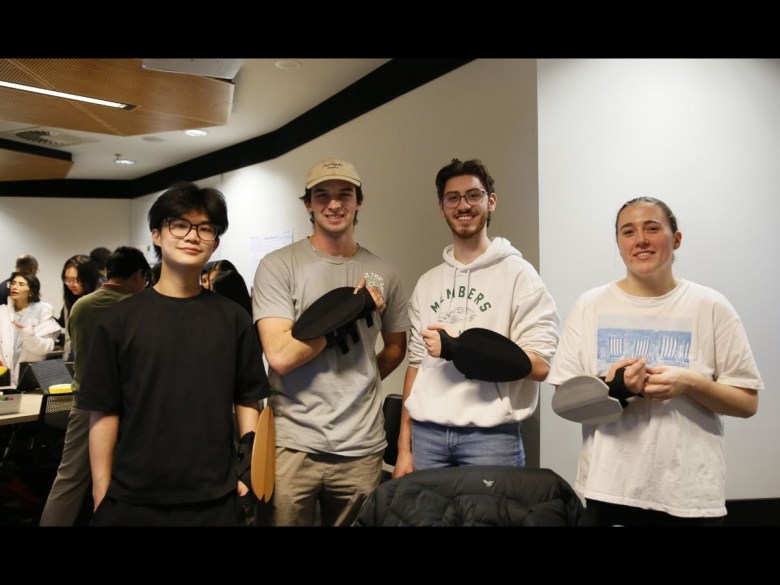Biomedical engineering students at RMIT were put to the test this year constructing innovative solutions to the barriers faced by people with disability.
The Bachelor of Engineering students took part in a collaborative project to create new adaptive technologies, teaming up with Freedom Solutions, a not-for-profit engineering organisation.
Lochlann Sacco was one of the students involved. He was part of a team of four that developed Project Paddlefish, an arm propulsion device to be used by scuba divers with lower limb paralysis.
The first semester of the assignment was spent planning, researching and ideating. The group spent some time looking at existing underwater tools for disabled divers and exploring the barriers and problems each one offered, trying to come up with something safe, easy to use, ergonomic and relatively inexpensive.
As part of the process, the students met with divers with disability who were able to provide feedback on their designs.
The first design the group came up with was a full wetsuit with modular arm rails.
“It was definitely overengineered,” Sacco said.
Community feedback led them away from that idea and from successive ones that also proved to be not quite right for divers.
He said the feedback was “so welcome”, with the students learning how to be comfortable with someone “taking your design and ripping it back down to shreds”.
“Trying again was the most beneficial thing that we did, and being able to take it on the chin definitely helped our process. We were so excited to just have someone tear it apart so we could do it again.”
Finally, the students settled on their modular arm idea.
Sacco said they started with a pre-existing arm brace and modified it to be able to slide a fin onto the forearm, using a modular arm rail.
“That way, if you were unable to kick for any reason, or you just want the extra speed boost, you could do breaststroke or any kind of sculling under the water,” he explained.
The students managed an impressive 20 per cent speed boost on their first finished fin, in what Sacco described as “a huge benefit to swimmers who can’t kick or who have weak musculature”.
“It was incredible to watch it go from this team of four who had no idea what they were doing, to this finished product in 12 months,” he said.
And the group isn’t done yet, he added.
“It’s such a cool project that we’d like to keep tinkering and pushing it forward, and we have ideas that we can put into different versions of it in future, taking it as far as we can.”
Sacco said the assignment demonstrates how engineering can have tangible benefits in people’s day to day lives.
“We try to solve the problems that people forget about, trying to make everything just that little bit more convenient or a little bit easier. We’re on the next frontier in medicine and aerospace and all the different mechanical fields,” he said.

